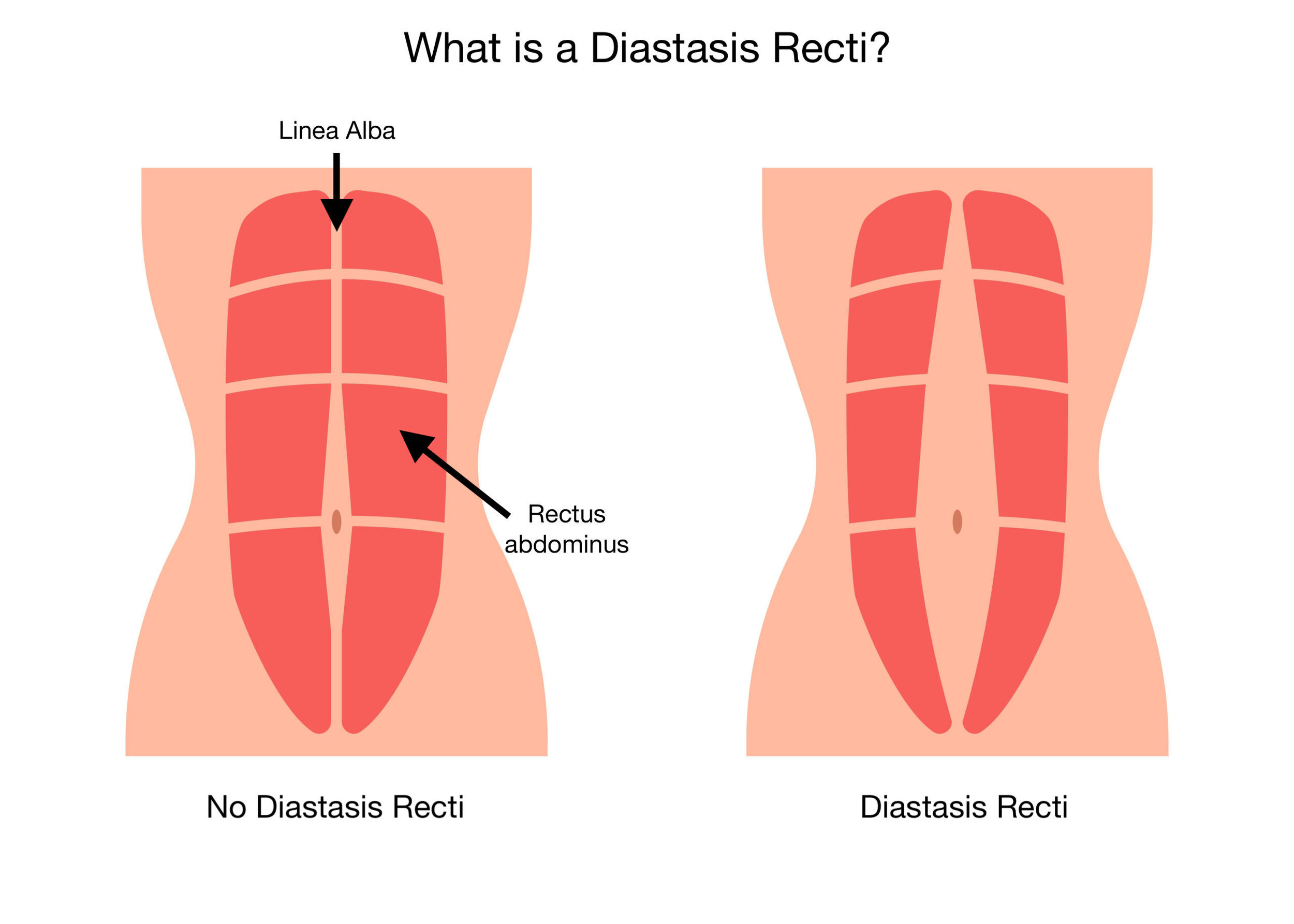Back
Tackling Diastasis Recti in the Pregnant and Postpartum Phases
By Dr. Christine Martirez PT, DPT on 3/8/2024

The journey of pregnancy and postpartum recovery brings about incredible transformations in a woman's body, including changes in the abdominal muscles. Diastasis recti, a condition characterized by the separation of the abdominal muscles, is a common occurrence during and after pregnancy. In this blog post, we'll explore what diastasis recti is, how to prevent it, its relevance to pregnancy and postpartum, and how pelvic floor physical therapy plays a pivotal role in its treatment and management.
What is Diastasis Recti?
Definition:
Diastasis recti refers to the separation of the rectus abdominis muscles, the pair of muscles that run vertically down the front of the abdomen. This separation occurs when the connective tissue between these muscles, known as the linea alba, stretches and becomes thin.Causes:
Diastasis recti is most commonly associated with pregnancy, where the expanding uterus puts significant pressure on the abdominal muscles. However, it can also occur due to factors like improper heavy lifting or multiple pregnancies.

Prevention Strategies
Proper Body Mechanics:
Engage in proper body mechanics, especially during activities that involve lifting, to avoid unnecessary strain on the abdominal muscles.Strengthening Core Muscles:
Incorporate exercises that strengthen the core muscles, focusing on the transverse abdominis, obliques, and pelvic floor. Pilates and specific core workouts can be beneficial.Good Posture:
Maintain good posture to support proper alignment of the spine and abdominal muscles. Avoid excessive arching or rounding of the back.

Relevance to Pregnancy and Postpartum
Pregnancy:
Diastasis recti commonly occurs during the second and third trimesters of pregnancy as the abdominal muscles stretch to accommodate the growing uterus.Postpartum:
After childbirth, the abdominal muscles may not immediately return to their pre-pregnancy state. Diastasis recti is prevalent postpartum and may contribute to a persistent "mommy pooch" appearance.
Treatment and Management
Pelvic Floor Physical Therapy:
Pelvic floor physical therapy is a key component of diastasis recti management. Therapists conduct assessments to evaluate the severity of the separation and develop personalized treatment plans.Strengthening Exercises:
Pelvic floor physical therapy incorporates targeted exercises to strengthen the deep abdominal muscles, including the transverse abdominis and pelvic floor muscles.Corrective Movements:
Therapists guide individuals in performing corrective movements that support the closure of the separation and promote optimal function of the abdominal muscles.Breathing Techniques:
Proper breathing techniques are essential for diastasis recti management. Therapists teach individuals how to engage the diaphragm and coordinate breath with movement to support the core muscles.

Role of Pelvic Floor Physical Therapy
Comprehensive Assessment:
Pelvic floor physical therapists conduct comprehensive assessments to evaluate the pelvic floor, abdominal muscles, and overall musculoskeletal function.Individualized Treatment Plans:
Treatment plans are tailored to the individual's unique needs, considering factors such as the severity of diastasis recti, muscle imbalances, and overall physical health.Education and Empowerment:
Pelvic floor physical therapy includes education on lifestyle modifications, proper body mechanics, and self-care practices to empower individuals in managing and preventing diastasis recti.
Embracing Abdominal Harmony
Understanding diastasis recti and its impact on pregnancy and postpartum is a crucial step toward nurturing deep core strength. Prevention strategies, coupled with the expertise of pelvic floor physical therapy, empower individuals to embark on a journey of recovery with confidence. By focusing on strengthening the core muscles, adopting appropriate postures, and seeking professional guidance, women can promote optimal abdominal health during and after the transformative phases of pregnancy and postpartum. If you are experiencing symptoms or concerns related to diastasis recti, consulting with a pelvic floor physical therapist is a valuable and proactive step towards achieving abdominal harmony and well-being.
Read More:
How Chronic Pelvic Congestion in Men Contributes to Prostatitis By Shannon Strauch, PTA, STMT-1 on 12/11/2024 How lymphatic issues can cause symptoms of prostatitis Prostatitis and Tight Pelvic Floor Muscles: A Comprehensive Guide By Shannon Strauch, PTA, STMT-1 on 12/10/2024 How a tight pelvic floor can be the reason for prostatitis symptoms
Are you ready to live pain free?
Request An Appointment